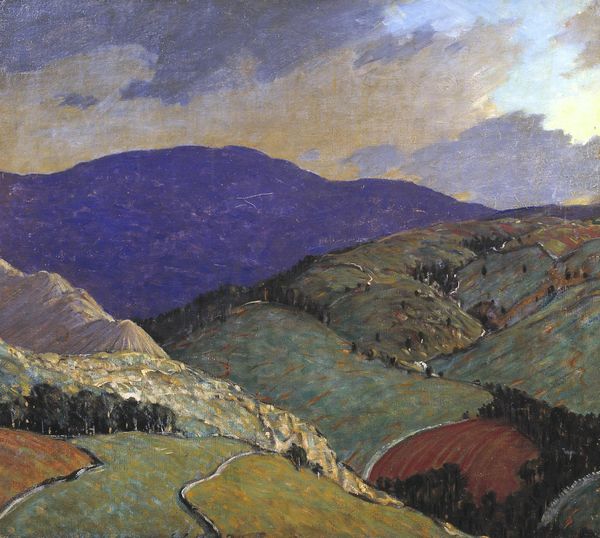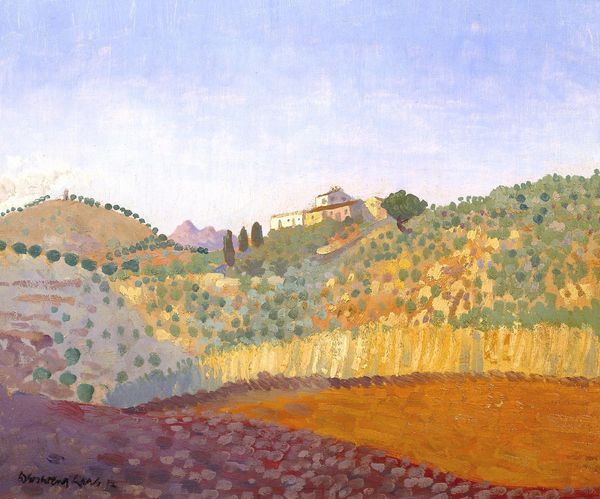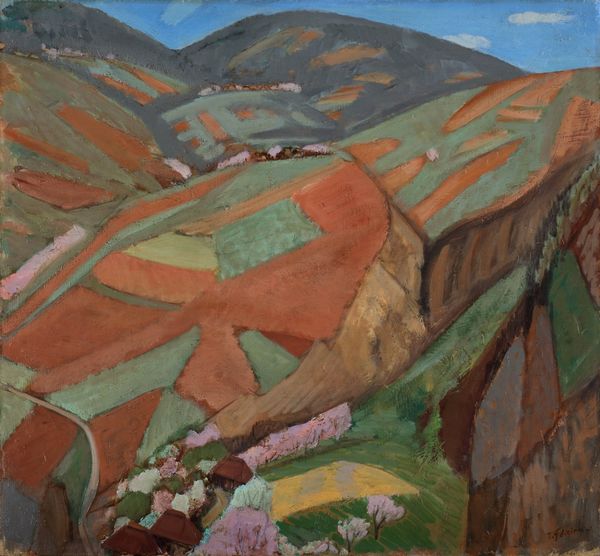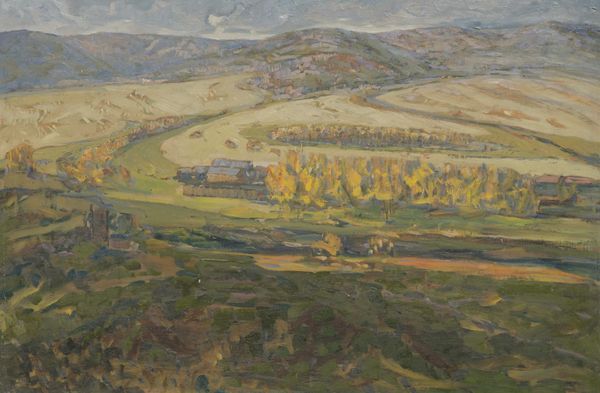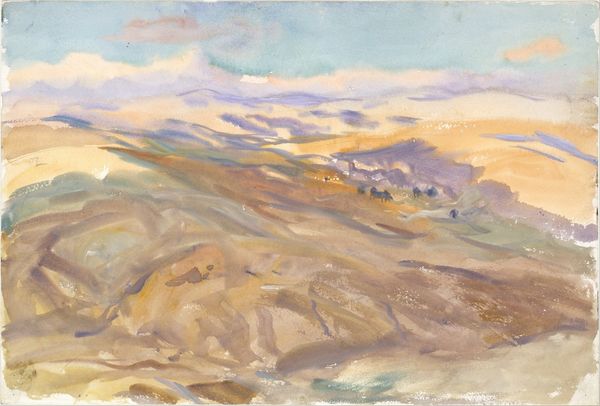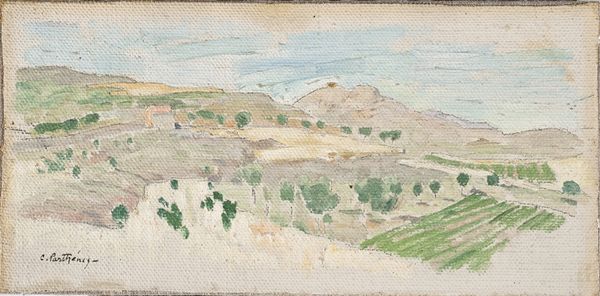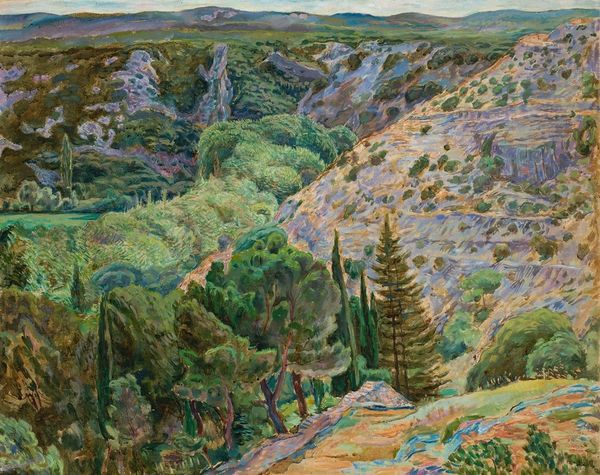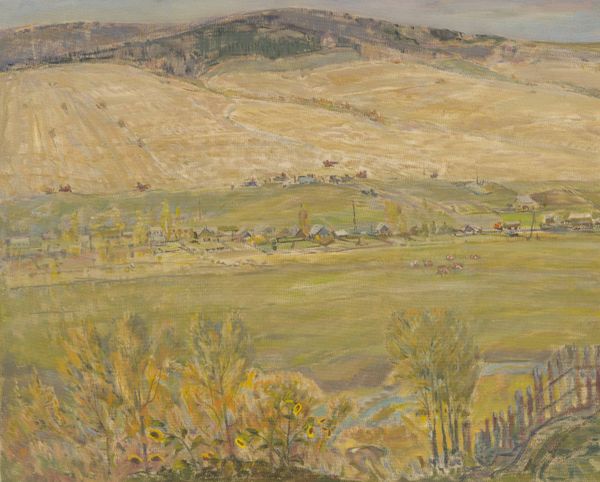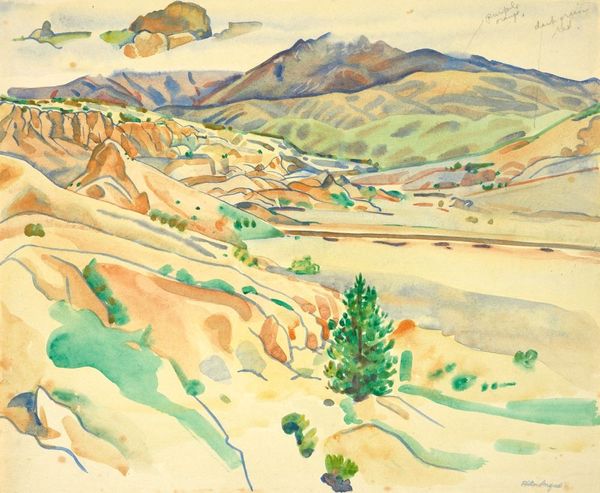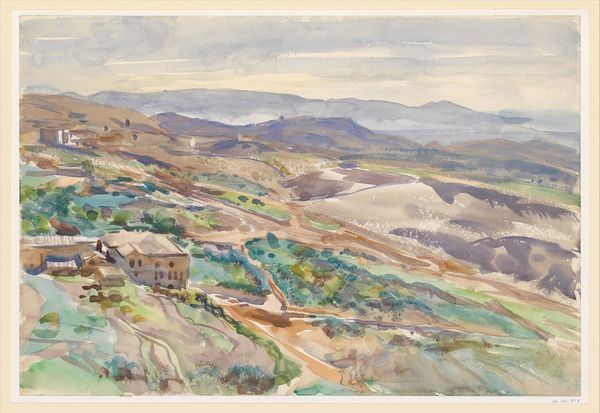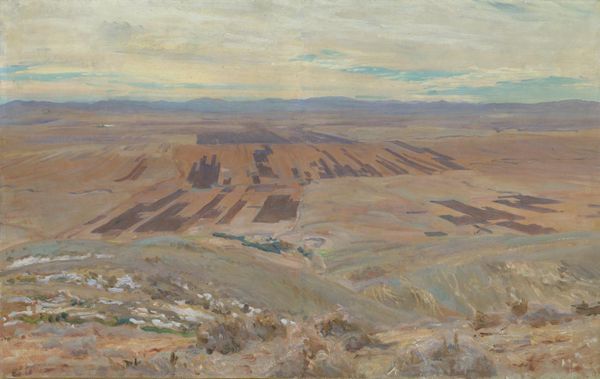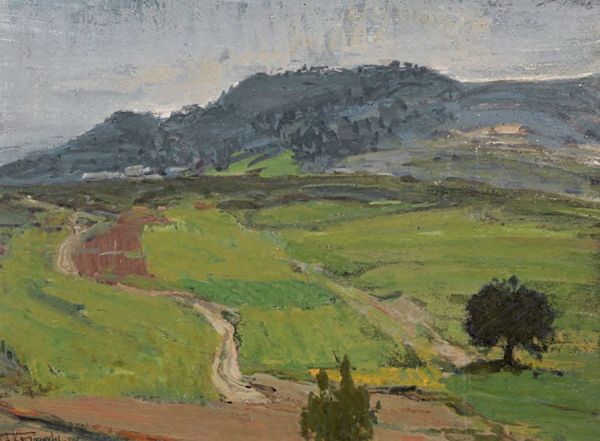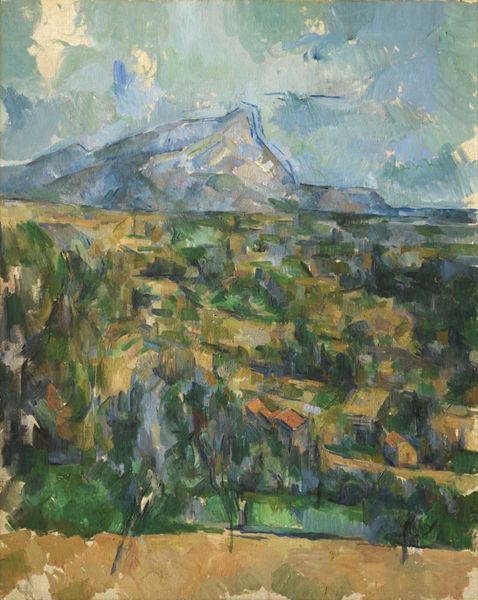
Dimensions: 63.5 cm (height) x 85.5 cm (width) (Netto)
Curator: Looking at Niels Larsen Stevns' "Udsigt fra Slotspladsen, Cagnes," painted in 1923, one is struck by the atmospheric quality. It offers a scene from Cagnes, a landscape rendered in the light-infused style often associated with Impressionism. Editor: My initial reaction is drawn to the textures, those visible strokes of oil paint give it a very tactile feel. The overall composition feels less about a perfect representation and more about the process of seeing and rendering. Curator: Indeed, and to understand the artwork fully, we must consider the historical context of landscape painting. Stevns was working within a tradition that, by the early 20th century, had begun to interrogate its own role in relation to nationhood and colonial viewpoints. How might we read the gaze offered in this particular view? What does he leave in and what does he exclude, particularly considering that the land had histories of exploitation. Editor: That's insightful. Considering the labor embedded in this scene of cultivated land and the physical act of painting 'en plein air', we see a complex interplay of the artist's labor responding to other labor—farmers tending the terraced slopes below the city walls. The visible brushwork becomes almost performative, highlighting his work. Curator: Right. Also, don't forget the choice of perspective itself. The vista invites us to assume a position of power. And as feminist theorists have explored the historical gendered dynamic of ‘male gaze,’ there’s that invitation, for the contemporary museum visitor, to think about gendered social structures of viewing landscapes. Editor: I am keen on how Stevns works with color here. There is earthy pigment juxtaposed with the pale sky which highlights both, without either overwhelming the painting's balance of warmth and a subtle underlying cool tone. The materiality contributes greatly to its affect. Curator: Agreed, I believe Stevns encourages us to interrogate these layers – seeing both beauty, and understanding the histories and material processes through which it comes. Editor: It has been a fascinating material exploration, to connect process to art, to histories and cultures embodied and imbued within pigment and form.
Comments
No comments
Be the first to comment and join the conversation on the ultimate creative platform.
